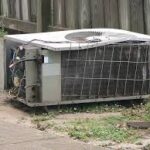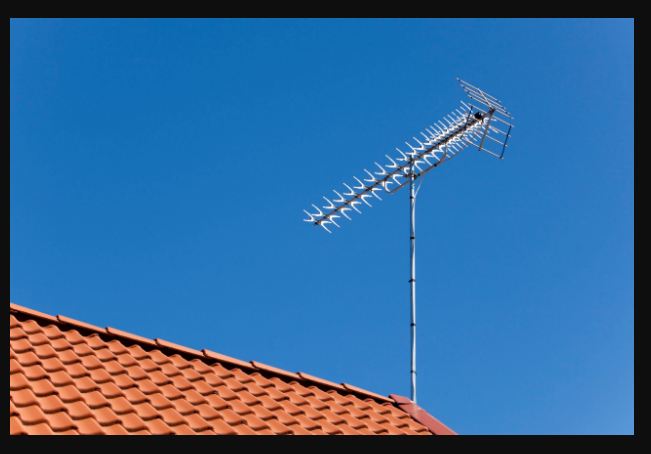Table of Contents
Introduction To TV Aerials
In today’s digital age, TV aerials remain fundamental to accessing television broadcasts. Whether setting up a new aerial system or troubleshooting reception issues, understanding the nuances of installation, types, and troubleshooting is crucial.
This comprehensive guide aims to provide you with the knowledge and insights needed to navigate the world of TV aerials effectively.
Understanding the Basics of Aerial Installation
Before delving into installation specifics, it’s essential to grasp the fundamental principles of TV aerials. This section provides an overview of how TV aerials work, including signal reception, antenna positioning, and cable connections.
DIY vs. Professional Installation: Which Is Right for You?
When installing a TV aerial, you have two options: DIY installation or hiring a professional. This subsection weighs the pros and cons of each approach, considering factors such as expertise, safety, and cost-effectiveness.
Step-by-Step Guide to DIY Aerial Installation
For those inclined towards DIY projects, this step-by-step guide walks you through installing a TV aerial.
From selecting the right location to mounting the antenna and connecting cables, each step is explained in detail to ensure a successful installation.
Understanding Types of TV Aerials
Different Types of TV Aerials: Pros and Cons
TV aerials come in various shapes and sizes, each designed to cater to specific signal conditions and geographical locations. This section explores the most common types of TV aerials, highlighting their advantages and limitations.
Indoor vs. Outdoor Aerials: Making the Right Choice
One of the critical decisions when selecting a TV aerial is choosing between indoor and outdoor options. This subsection compares indoor and outdoor aerials in terms of performance, durability, and installation requirements, helping you make an informed decision.
Specialized Aerials for Unique Situations
Standard TV aerials may not suffice in some cases, especially in areas with weak signal reception or specific interference issues. This subsection introduces specialized aerials designed to address these challenges, such as high-gain antennas and amplification systems.
Troubleshooting TV Aerial Issues
Common Reception Problems and Solutions
Even with proper installation, TV aerials may encounter reception issues due to various factors such as signal interference, weather conditions, or equipment malfunction.
This section identifies common reception problems and provides troubleshooting tips to resolve them effectively.
Signal Boosting Techniques for Improved Reception
If you’re struggling with weak or intermittent signals, there are several techniques you can employ to boost signal strength and quality. This subsection offers practical solutions to enhance your viewing experience, from adjusting antenna positioning to using signal amplifiers.
When to Seek Professional Assistance
While DIY troubleshooting can resolve many aerial issues, some problems may require professional intervention.
This subsection outlines scenarios where it’s advisable to seek the expertise of a qualified aerial technician to ensure the timely and effective resolution of complex issues.
FAQs (Frequently Asked Questions)
Which type of TV aerial is suitable for my area?
Choosing the suitable TV aerial depends on factors such as location, terrain, and distance from transmission towers. Conducting a signal strength analysis or consulting with a local aerial expert can help determine the most suitable type for your specific circumstances.
What should I do if my TV aerial loses signal during bad weather?
Bad weather conditions like heavy rain or strong winds can disrupt TV signal reception. In such cases, waiting until the weather improves is advisable, as signal interference caused by atmospheric conditions is often temporary and resolves on its own.
Can I use my existing satellite dish for TV aerial reception?
While satellite dishes and TV aerials serve different purposes, some satellite dishes are compatible with TV aerial signals, depending on their design and configuration. Consult a qualified technician to determine if your satellite dish can be repurposed for TV aerial reception.
How often should I reposition or realign my TV aerial?
TV aerials should be positioned correctly during installation to ensure optimal signal reception. However, if you experience signal issues or changes in reception quality over time, it may be necessary to reposition or realign the aerial periodically to maintain optimal performance.
Can multiple TV aerials be installed for better reception?
Installing multiple TV aerials, also known as antenna stacking, can be a viable solution in areas with weak or inconsistent signal reception.
However, antenna stacking requires careful planning and configuration to avoid signal interference and ensure effective signal distribution to all connected devices.
How can I future-proof my TV aerial system for emerging technologies?
With advancements in broadcasting technologies, it’s essential to future-proof your TV aerial system to ensure compatibility with emerging standards such as 4K Ultra HD and digital radio. This can be achieved by investing in high-quality equipment, considering scalability and upgradeability, and staying informed about industry developments.
Conclusion:
Navigating the world of TV aerials can seem daunting, but with the proper knowledge and resources, you can enjoy reliable and high-quality television reception. Whether installing a new aerial system, exploring different antennas, or troubleshooting reception issues, this guide equips you with the information needed to make informed decisions and overcome challenges effectively.
Latest Post!
- Extend Your Living Space: Functional and Stylish Outdoor Deck Ideas

- From Concrete to Asphalt: Exploring Different Driveway Paving Options

- The Hidden Dangers of Drywood Termite Holes and Droppings in Your Home

- How Fast House Buyers Can Help You Sell Your Home in Record Time

- Transform Your Outdoor Space: Stamped Concrete Patio Ideas and Inspiration

- The Benefits of Hiring an HVAC Specialist to Fix Your Broken Aircon



